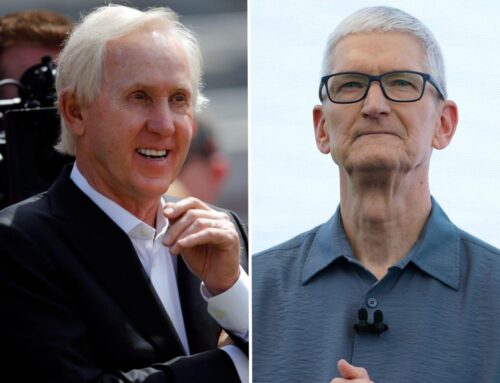Move Over Nvidia, Taiwan Semiconductor, and Micron. Brad Gerstner’s Altimeter Capital Just
June 5, 2025
Brad Gerstner’s Altimeter Capital holds 2,999,536 shares of this year’s hottest AI IPO stock.
Brad Gerstner is the founder and CEO of hedge fund Altimeter Capital. Some of his more notable wins include being an early investor in data cloud company Snowflake and Asian ridehailing leader Grab.
As is the case with many investment funds, Altimeter has made artificial intelligence (AI) stocks a core feature of its portfolio in recent years. According to its most recent 13F filing, Altimeter trimmed its stake in Nvidia during the first quarter while completely dumping its stakes in Micron and Taiwan Semiconductor Manufacturing.
Interestingly, though, I discovered that Altimeter holds a position in red-hot AI IPO stock CoreWeave (CRWV -17.13%). This comes from an investment Altimeter made when CoreWeave was still a private company. As of the close of trading on June 4, Altimeter’s 2,999,536 shares were worth about $489 million
Let’s explore some of the core themes in the ongoing AI revolution to try and discern what may have motivated these moves. From there, I’ll break down CoreWeave’s business and recent price action to help determine if the stock is a good buy right now.
Why sell Nvidia, Micron, and Taiwan Semi stock right now?
Considering how robust demand has been for high-end graphics processing units (GPU) and memory storage chips, reducing exposure to names such as Nvidia, Micron, and Taiwan Semi looks like a head-scratcher on the surface. However, this is not the first time that Gerstner has shown some contrarian characteristics in his investment style.
While I cannot say for certain what Altimeter’s current thesis is regarding chip stocks or the AI movement more broadly, I’ve come up with some reasons that may help justify the fund’s recent moves.
According to industry estimates, Nvidia currently controls roughly 90% (or more) of the data center GPU market. While a lead like that might suggest Nvidia’s moat is insurmountable, there are some risks to consider. First, Nvidia’s revenue sources are heavily concentrated among cloud hyperscalers such as Amazon, Alphabet, and Microsoft.
Each of these companies has been developing their own custom AI chips, potentially signaling their intentions to migrate away from Nvidia’s architecture over time. When you layer on top that the fact that Advanced Micro Devices has steadily been gaining momentum in the data center arena — as its deals with Oracle, Microsoft, and Meta Platforms demonstrate — Nvidia’s growth could be on course for some deceleration.
Lastly, one of the storm clouds hanging over Nvidia at the moment is its exposure to China. New U.S. export controls and President Donald Trump’s tariffs could cut into its sales there.
Micron operates in a unique pocket of the AI realm. It specializes in memory storage chips, which are vital hardware for data centers, personal computers, and smartphones, among other technologies. With that said, memory chips are relatively commoditized. On top of that, a shift toward cloud-based AI infrastructure could potentially serve as a headwind for Micron’s hardware-centric chip memory business.
Taiwan Semiconductor specializes in fabrication services — its foundries are where chips designed by Nvidia, AMD, Broadcom, and a host of others are actually manufactured. While demand for GPUs and other types of AI chips is strong, a deceleration in sales growth from key customers (i.e., Nvidia) could trickle down to TSMC’s business, too.
Furthermore, most of TSMC’s factories are located in Taiwan. Given the ongoing geopolitical pressures Taiwan faces from China, it’s possible that U.S. chip designers like AMD or Nvidia could begin to turn to alternative foundry providers such as Intel.

Image Source: Getty Images.
What does CoreWeave do?
CoreWeave is a cloud computing infrastructure provider that offers its clients access to Nvidia GPUs and a host of other chip integrations. As such, its business is not as exposed to the time it takes to design and manufacture sophisticated hardware — unlike the names explored above. In a way, this makes the hyperscaler more nimble than other chip and data center stocks, allowing the company to scale at a faster pace.
CoreWeave is able to take advantage of the booming chip landscape but more so on the AI training and inferencing side. Ultimately, it fills the gap between producing chipsets and accessing optimized AI cloud infrastructure.
It’s not that Nvidia, Micron, or TSMC are poor investment choices right now. It’s simply that those businesses might be reaching levels of maturity, whereas CoreWeave’s model could be in the early phases of exponential expansion.
Is CoreWeave stock a good buy right now?
The chart below illustrates how CoreWeave’s price-to-sales (P/S) ratio has progressed since its initial public offering (IPO) earlier this year.
CRWV PS Ratio data by YCharts
There are a couple of big takeaways from this chart. First, it’s clear that CoreWeave has experienced notable valuation expansion. In my view, outsize momentum is propelling CoreWeave stock right now — and buying in the wake of its recent climb could leave you as an unsuspecting bag holder.
In addition, CoreWeave’s P/S multiple is almost fourfold that of Oracle — which also provides core data center infrastructure services. Oracle is a mature, profitable business, unlike CoreWeave’s high-cash-burn operation.
While I understand the thesis behind CoreWeave’s value proposition in the AI landscape, I think the stock is overbought right now. I would pass on investing at its current valuation, but would keep tabs on the company and its growth prospects.
John Mackey, former CEO of Whole Foods Market, an Amazon subsidiary, is a member of The Motley Fool’s board of directors. Suzanne Frey, an executive at Alphabet, is a member of The Motley Fool’s board of directors. Randi Zuckerberg, a former director of market development and spokeswoman for Facebook and sister to Meta Platforms CEO Mark Zuckerberg, is a member of The Motley Fool’s board of directors. Adam Spatacco has positions in Alphabet, Amazon, Meta Platforms, Microsoft, and Nvidia. The Motley Fool has positions in and recommends Advanced Micro Devices, Alphabet, Amazon, Intel, Meta Platforms, Microsoft, Nvidia, Oracle, and Taiwan Semiconductor Manufacturing. The Motley Fool recommends Broadcom and recommends the following options: long January 2026 $395 calls on Microsoft, short August 2025 $24 calls on Intel, and short January 2026 $405 calls on Microsoft. The Motley Fool has a disclosure policy.
Search
RECENT PRESS RELEASES
Related Post





